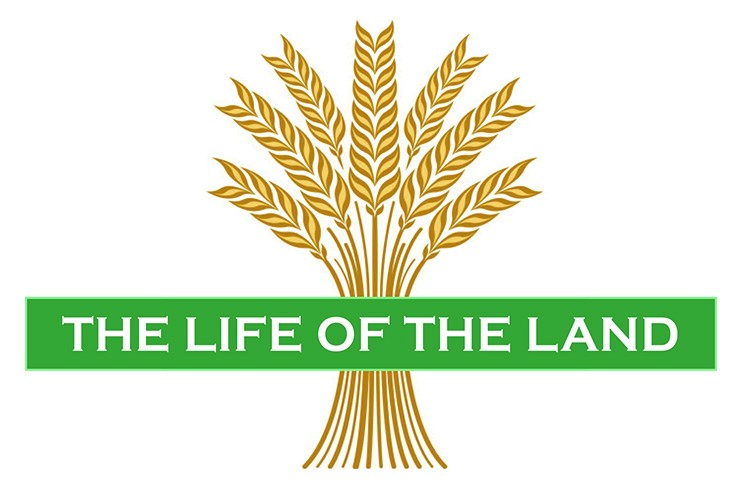News from the Noteworthy by Sustainable Otsego
The Life of the Land Visits Local High Tunnels

In our last column, we explored the virtues of high tunnels (aka hoop houses)—the farmers’ new best friends. We have since visited several local farms to learn more about the uses of this versatile structure, which provides an environmental control for farmers, blunting weather extremes dished up by climate change.
At Unadilla Community Farm, an educational organic farm we discussed in 2022, their 16’x 40’ hoop house is meticulously designed and maintained. To make optimal use of every cubic inch, the floor is laid out in three raised beds with two 2-foot wide paths—just enough for one person to work the beds or pull over row covers.
The most productive use of this space is for plants grown vertically, such as tomatoes and cucumbers, supported by a network of twine suspended from the hoop frame. And if it gets too warm inside, the plastic sides roll up, exposing screening that protects the crops from wind-born blights, insects, and animals.
Norwich Meadows Farm has a different approach, where 49 hoop houses shelter crops for greenmarkets and CSAs. This empire of 20 x200’ houses is hugely productive of an impressive array of organic vegetables and fruits. While we did not see any formal raised beds, all plantings are on mounds inside the houses with space between them for machine cultivation.
In our last column we referred to the Cornell RAPP program for recycling agricultural plastic. Ag plastic is an innovation that has helped make our food supply cheap and reliable. This applies not just to hoop houses, but also to acres of row crops now mulched with black plastic sheets, and ubiquitous bale wraps which have replaced the traditional silo. Unfortunately, we have learned that the RAPP program is not now available. Due to low oil prices, it is cheaper to make products from new raw material than from used ag plastic, which is invariably soiled and mixed with debris.
At Cairncrest Farms we saw a clever application for the huge plastic sheets from old billboards. Edmund Brown applied them to cover a 24’x78’ hoop house which shelters his pigs in winter. Although there is presently no satisfactory home for used ag plastic, the footprint of embedded energy in these used billboards is much smaller than would be required to build a permanent shelter such as a barn.
In another application, we hope to see a “teaching” high tunnel at the Cooperstown Elementary School Kid Garden. The goal is to get the garden’s educational value to correspond to the school year. Under row covers, in a solar heated high tunnel, numerous kinds of greens can be grown and harvested even in the dead of winter. Stop by Kid Garden—behind the school—to see for yourselves.
Authored by Sustainable Otsego. Since 2007, we have promoted ecologically sound practices—locally, regionally and nationally. We advocate sustainable living, economic independence, and home rule. Visit sustainableotsego.net or facebook.com/SustainableOtsego.

